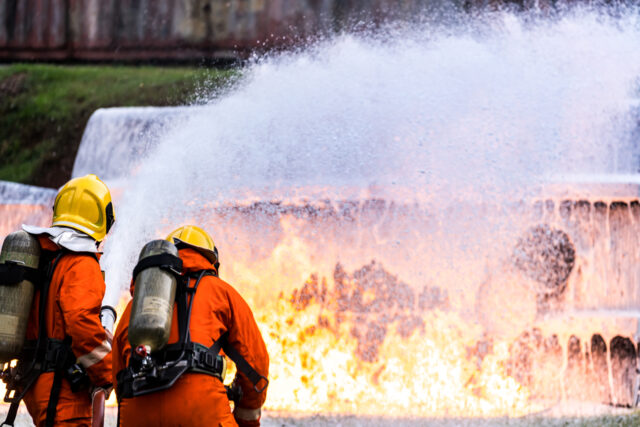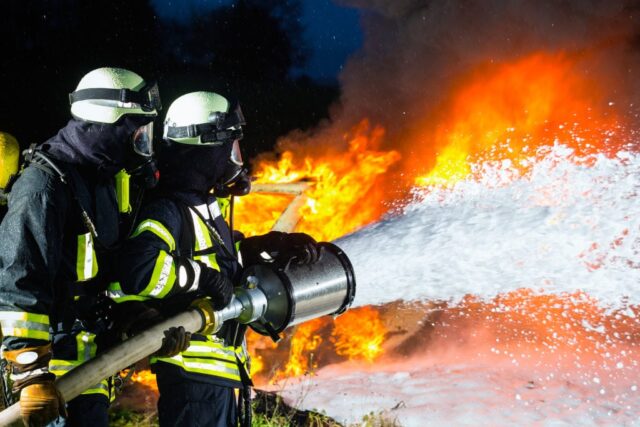
Aqueous film-forming foam (AFFF) has been used in firefighting and military applications for decades. Still, its toxic chemicals have caused widespread water and soil contamination and serious health problems for many individuals. Communities living near military bases and airports, firefighters, and military personnel, have been especially impacted by exposure to these harmful chemicals.
In response, communities across the country have mobilized to push back against AFFF and demand accountability from the manufacturers of this dangerous foam. Through advocacy efforts, lawsuits, legislative and regulatory action, and cleanup and remediation efforts.
Community Advocacy and Awareness Efforts

Community advocacy and awareness efforts against AFFF (aqueous film-forming foam) have gained significant momentum in recent years as more people have become aware of the hazardous effects of this firefighting foam on the environment and human health.
AFFF is a type of firefighting foam that contains per- and poly-fluoroalkyl substances (PFAS), a group of artificial chemicals that do not break down easily in the environment and can accumulate in the food chain. PFAS exposure has been linked to various health issues, including cancer, liver damage, and immune system suppression.
To raise awareness about the dangers of AFFF and advocate for safer alternatives, various community organizations and advocacy groups have taken action at the local, national, and international levels. These efforts include:
Education and Outreach: Community organizations have been conducting awareness campaigns to educate people about the dangers of AFFF and how to protect themselves from its harmful effects. Did you know that January is officially called FireFighter Cancer Awareness Month, and there is a genuine effort to reach various members of Congress, healthcare facilities, fire departments, and other organizations to educate them about the dangers of AFFF?
Advocacy and Lobbying: Advocacy groups have been lobbying government agencies, including the Environmental Protection Agency (EPA) and the Department of Defense (DOD), to ban the use of AFFF and invest in safer alternatives. They have also pushed for stronger regulations to protect people from PFAS exposure in drinking water and other sources.
Research and Monitoring: Community organizations have been researching and monitoring better to understand the extent of PFAS contamination in their communities. This information is critical in identifying and addressing the sources of contamination and advocating for more robust regulatory action.
Alternative Solutions: Advocacy groups promote alternative firefighting methods and foam that are safer for the environment and human health. In general, there are two popular forms of alternatives against PFAS:
- Dry chemical extinguishers – They typically have a blanket of dust, an inert solid, and cover the flames to remove oxygen and immediately stop the chemical exchange. An extinguisher of this kind is effective for fires that include substances like wood, electronic items, and combustible materials.
- Fluorine-free foam – These materials create a unique blanket to extinguish the fire immediately. Removing fluorine makes it extremely safe to be used by anyone and contains a form of surfactant blends and polysaccharides.
Lawsuits Against AFFF Manufacturers

Firefighters are at a particularly high risk of exposure to AFFF and the PFAS chemicals it contains, as they are often the first responders to fires where the foam is used. The chemicals can also accumulate in their protective gear, exposing them to dangerous levels over time.
The Firefighter Foam Cancer Lawsuit against AFFF manufacturers demonstrates the need for corporate accountability and justice for those affected by this dangerous foam. It is also a reminder of the legal system’s critical role in protecting public health and the environment.
The lawsuit alleges that AFFF manufacturers knew about the risks of their products for years but failed to warn users or take adequate action to protect them. As a result, firefighters and others who have been exposed to AFFF have suffered serious health consequences, including cancer, liver damage, and developmental issues, among other things.
Legislative and Regulatory Action to Address AFFF Contamination

Federal Legislation: On April 25, 2022, Senator Kirsten Gillibrand and Dan Kildee introduced a new landmark bill in the senate and house that promises to eliminate chemicals permanently. It is by far the most all-encompassing law, which hopes that by October 5, 2024, all fire fighting equipment will be free of AFFF.
State Regulations: Several states have taken action to regulate PFAS in drinking water and other sources. For example, Michigan has established some of the strictest standards for PFAS in drinking water, and other states, such as New Hampshire and New York, have established similar standards or are in the process of doing so.
Conclusion
Through advocacy efforts, lawsuits, legislative and regulatory action, and cleanup and remediation efforts, communities are fighting against AFFF contamination and working to prevent further harm.
By raising awareness about the dangers of AFFF, holding manufacturers accountable for their actions, and developing alternative firefighting strategies and materials, these communities are demonstrating the power of collective action and the need for continued mobilization to protect public health and the environment.
Ultimately, the story of how communities are pushing back against AFFF is one of resilience, activism, and the power of collective action to effect change. By working together to demand justice and accountability, these communities demonstrate the vital role that everyday people can play in protecting public health and the environment.






